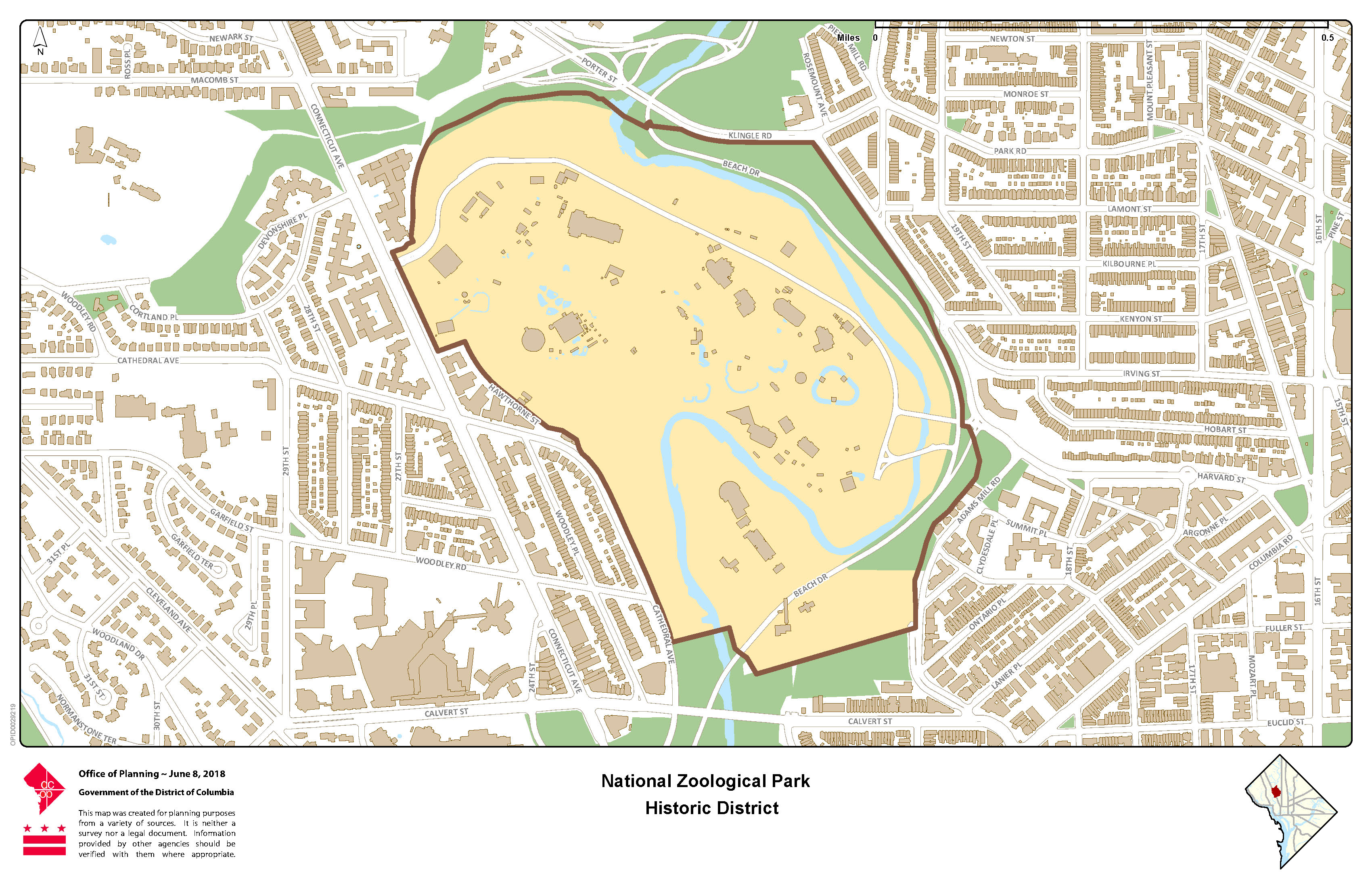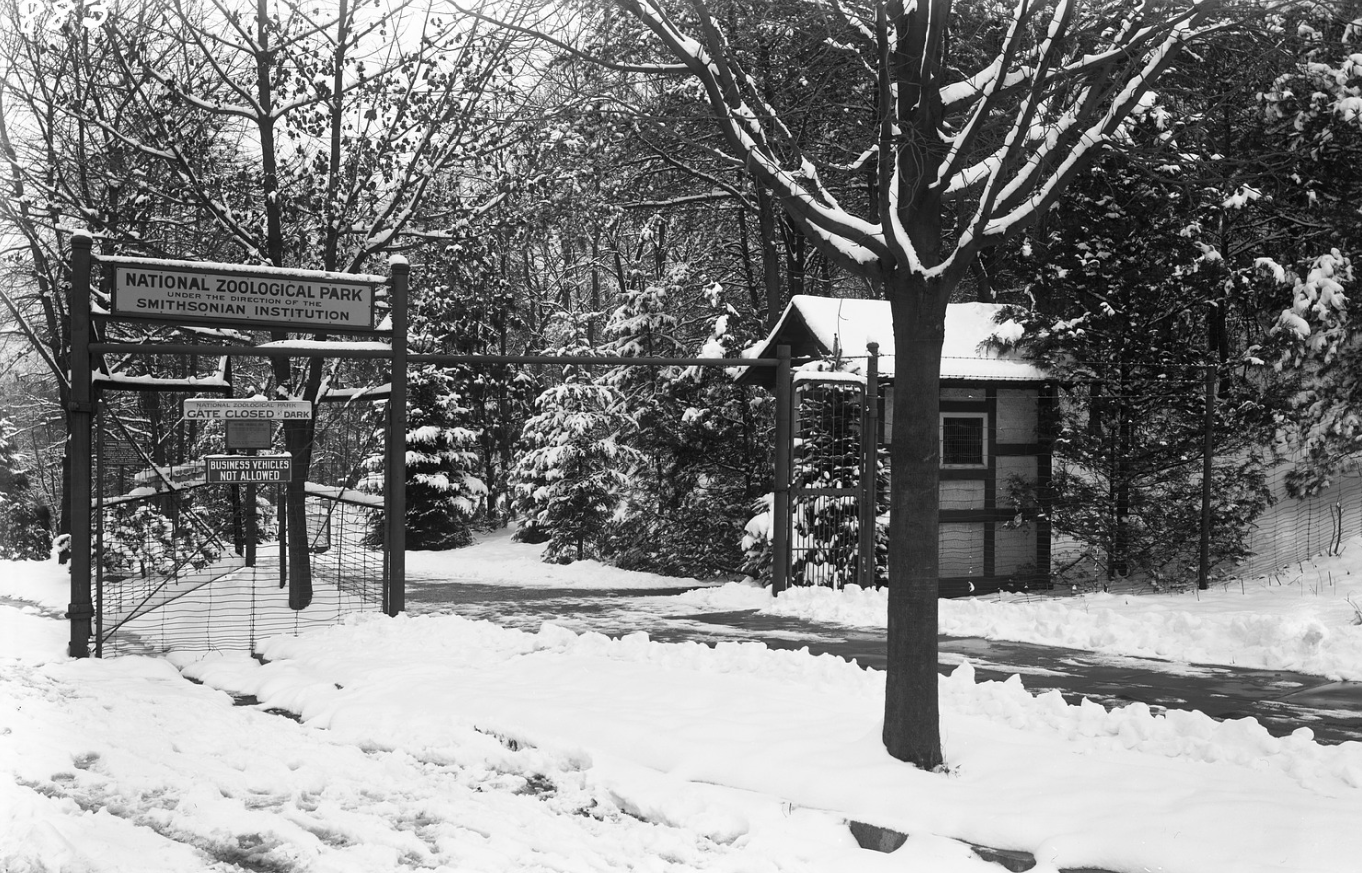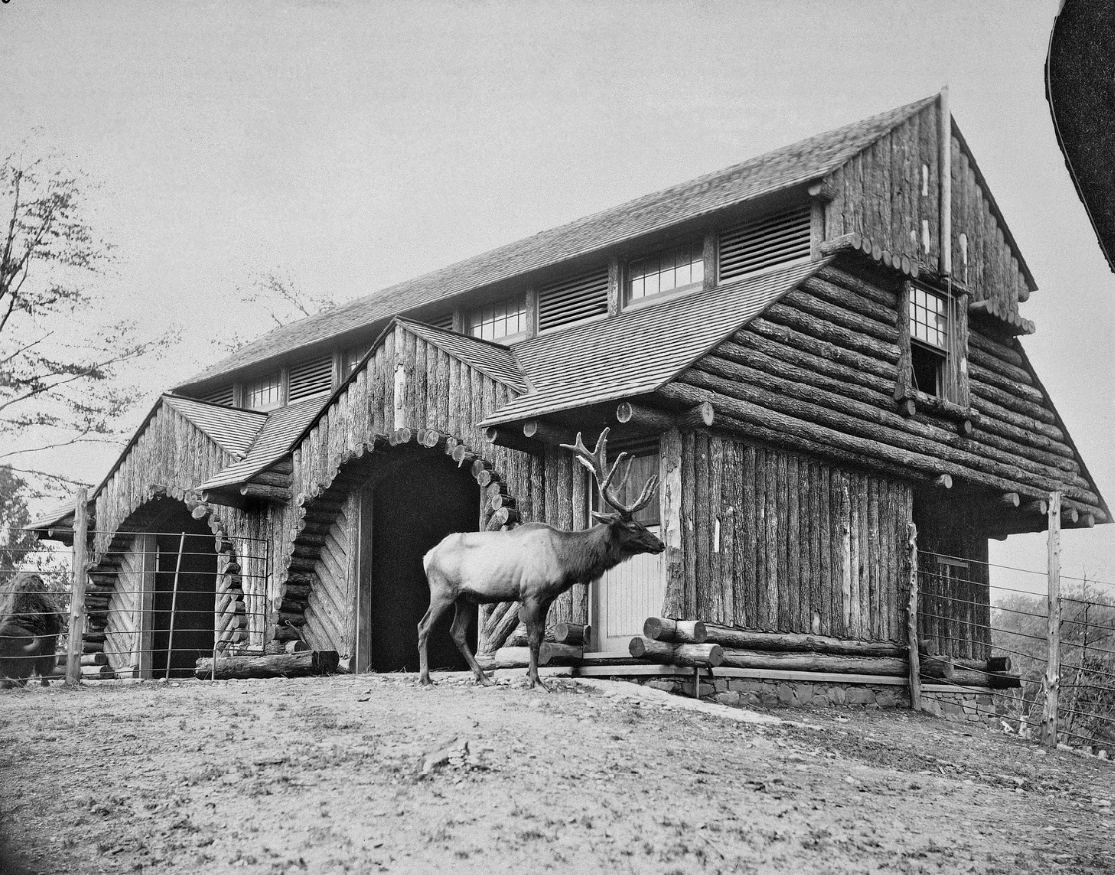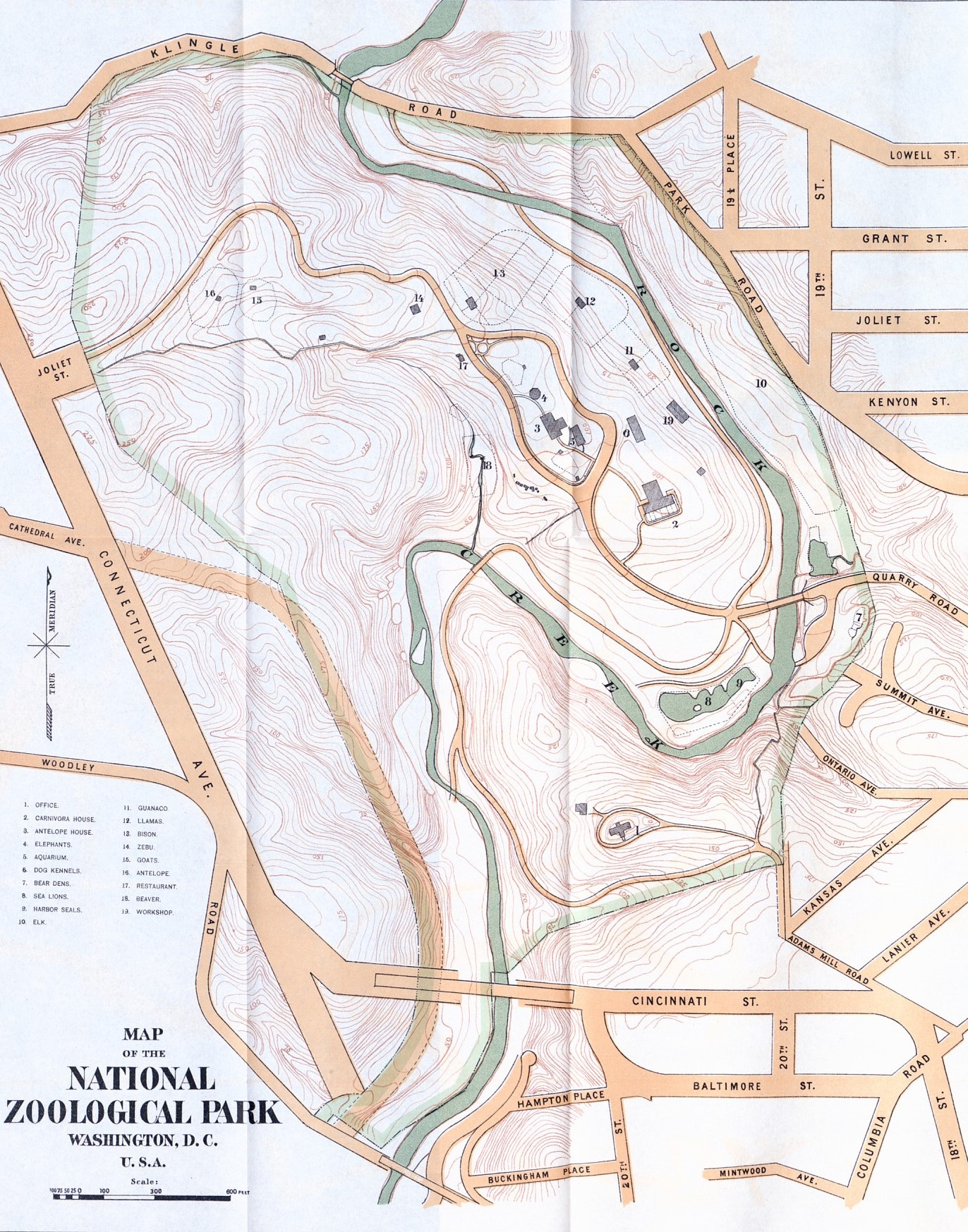Preservation Periodical: Volume 3, Issue 2
Summer 2024
National Zoological Park Historic District
By Millie Latack
The National Zoological Park (NZP) is not just a zoo. It is a species conservation, research and education facility, and even a National Register Historic District. For over a century, the NZP has been fulfilling its mission in the preservation and conservation of living species. This is further reflected in the extent of natural topographic preservation that gives the Zoo its distinct park atmosphere. These qualities were recognized by the National Register of Historic Places within the National Park Service deeming the entirety of the NZP campus its own Historic District.[1]

The Zoo really began before the park was even established. Smithsonian used the south yard of the Castle to showcase bison on the National Mall in efforts to protect the near extinct species. Opportunity for conservation and study of native species, both animal and plant alike, began in earnest in 1889 when Congress authorized a land purchase by the National Zoological Park Commission through the District of Columbia Appropriation Act of 1890. This Commission, overseen by the Smithsonian Board of Regents, purchased the 166.3 acres in late 1889.
Multiple properties were joined together to create the zoo land, some of which leave marks of the area’s development history. This included houses like the one owned by doctor Henry Holt, dilapidated sheds, and other outhouses. The most notable property was the Columbia/Adams grist and plaster mills situated at the southern end of the park on Rock Creek. These mills were said to have been in operation from the 1790s, later owned by U.S. President John Quincy Adams starting in 1823 through its demolition in 1867.[2]

The purchased acreage offered plenty other natural, scenic topography. The naturalism of the area was perpetuated in May 1890 when Smithsonian Secretary Langley commissioned Frederick Law Olmsted to design the park. In the early 20th century, zoo models favored architectural grandeur before animal welfare. Olmsted presented one of the first known zoo concepts that emphasized building for the animals and the visitors alike utilizing existing plants and natural features.
The 1901 SI annual report stated “…this was to be the first zoological collection in which each kind of animal was to have a park of its own, where it could live as its race should live, among natural surroundings…”

Early buildings that were constructed at the Zoo were designed by Boston architect W.R. Emerson. His designs favored more rustic elements which complemented Olmsted's natural aesthetic l.. The oldest remaining building in the historic district is currently called the Think Tank (formerly the Small Mammal House). Later buildings from the 1920s and 1930s feature the collections they housed in their exterior architecture, such as the Reptile Discovery Center.

From its original 185 to the now 2,200 species, the Zoo has continuously grown to facilitate the conservation practices for native and endangered species. Even at 133 years old, the emphasis on melding nature and exhibits has been perpetuated resulting in the preservation of early cultural park heritage. On April 11, 1973, this conservation was celebrated by being listed on the National Register of Historic Places as a park-wide historic district. The NZP remains significant in its original listed areas related to landscape architecture, urban planning, conservation, and science. The Smithsonian Institution continuously upholds its mission which is in keeping with the character of the district.
